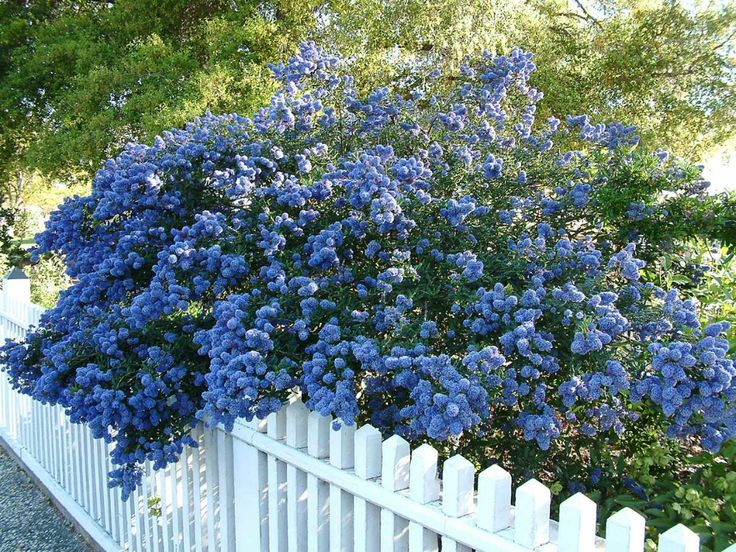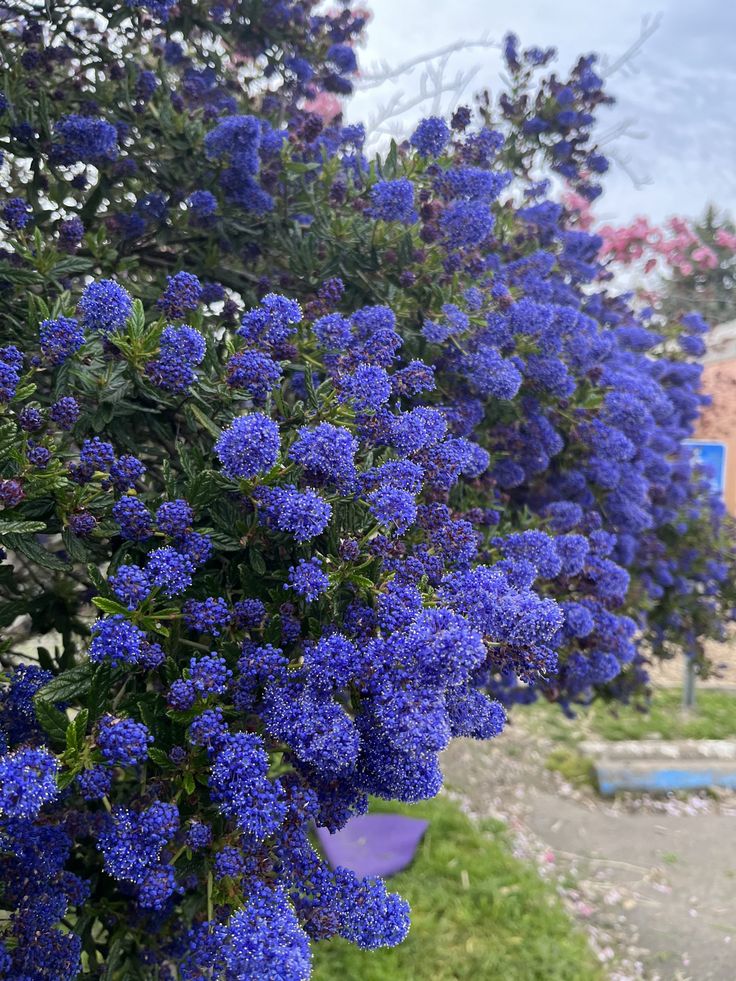Ceanothus ‘Concha’

Ceanothus ‘Concha’, commonly known as California Lilac, is a spectacular flowering shrub celebrated for its vibrant blooms, drought tolerance, and ecological value.
This cultivar belongs to the Ceanothus genus, which encompasses a diverse group of evergreen and deciduous species native to North America.
In this comprehensive article, we will explore the botanical intricacies, habitat preferences, life cycle, ecological significance, conservation status, and care guidelines for Ceanothus ‘Concha’.
Botanical Description
Ceanothus ‘Concha’ is a compact, evergreen shrub characterized by its dense foliage, glossy leaves, and showy clusters of flowers.
The plant typically grows to a height of 6 to 8 feet (1.8 to 2.4 meters) and features a spreading, rounded form.
The leaves are dark green, leathery, and lance-shaped, providing year-round interest in the landscape.
In spring, Ceanothus ‘Concha’ bursts into bloom, producing profuse clusters of fragrant, deep blue to purple flowers.
The flowers attract a variety of pollinators, including bees, butterflies, and hummingbirds, adding to the plant's ornamental value.
Habitat and Distribution
California Lilac is native to the coastal regions and foothills of California, where it thrives in a variety of habitats.
It is well-adapted to the Mediterranean climate of California, characterized by hot, dry summers and mild, wet winters.
Ceanothus ‘Concha’ is often found growing on rocky slopes, in canyon bottoms, and along roadsides, where it plays a crucial role in stabilizing soils and preventing erosion.
While primarily found in California, California Lilac cultivars like ‘Concha’ are also cultivated in other regions with similar climates, including parts of the Pacific Northwest and Mediterranean Europe.
Life Cycle and Phenology
As an evergreen shrub, Ceanothus ‘Concha’ maintains its foliage year-round, providing a constant source of color and texture in the landscape.
Flowering typically occurs in spring, with peak bloom periods varying depending on local climate conditions.
The flowers are followed by small, woody capsules containing seeds, which are dispersed by birds and other animals.
California Lilac may experience a period of summer dormancy during hot, dry periods, conserving water and energy until cooler, wetter conditions return in the fall.
With proper care, Ceanothus ‘Concha’ can live for many years, brightening gardens and landscapes with its beauty and charm.
Ecological and Cultural Importance
Ceanothus ‘Concha’ plays a significant ecological role as a habitat provider and nectar source for native pollinators.
The flowers attract a wide range of insects, contributing to the health and diversity of local ecosystems.
Furthermore, its drought tolerance and adaptability to various soil types make California Lilac a favored option for water-wise landscaping and habitat restoration projects.
Cultivars like ‘Concha’ are prized by gardeners and landscapers for their showy flowers, glossy foliage, and low maintenance requirements, enhancing the beauty and biodiversity of residential gardens, public parks, and botanical collections.

Caring for Ceanothus ‘Concha’
Sunlight
Plant California Lilac in a location that receives full sun to partial shade, as it requires abundant sunlight to thrive.
Watering
During the establishment period, water regularly, then taper off as the plant sets roots.
‘Concha’ thrives in well-drained, drought-tolerant soil.
Soil
Plant in well-drained, sandy or loamy soil with a neutral to slightly acidic pH.
Avoid heavy clay soils, which can cause root rot and other problems.
Pruning
Prune lightly after flowering to maintain a compact shape and encourage new growth.
Avoid heavy pruning, as Ceanothus ‘Concha’ blooms on old wood.
Mulching
Apply a layer of organic mulch, around the base of the plant to help retain soil moisture and suppress weeds.
Avoid covering the stems or foliage with mulch, as this can lead to rot and disease.
Following these care guidelines enables vibrant Ceanothus ‘Concha’ growth, preserving native species and enhancing California's natural beauty and ecosystems. Whether in gardens or restoration projects, its allure shines.
Leave a Reply
You must be logged in to post a comment.